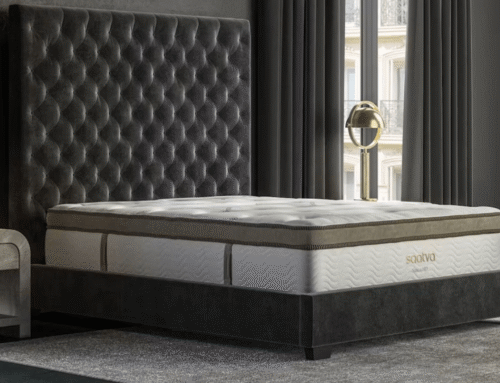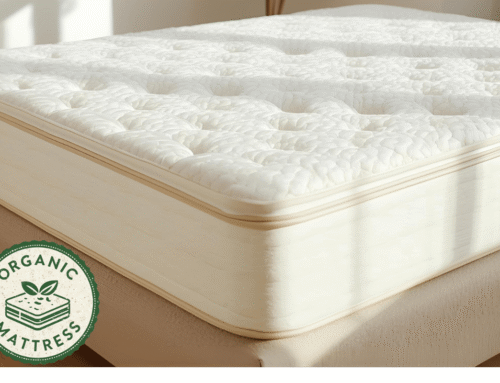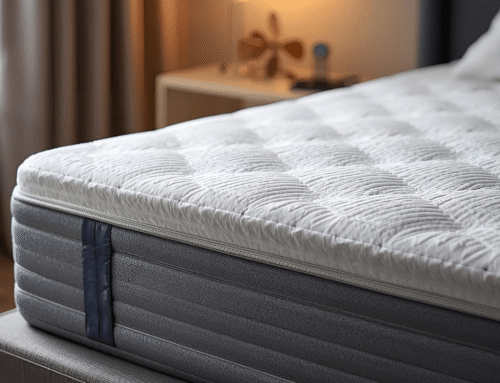Memory foam mattresses usually last around 7 to 10 years. Longevity depends heavily on the foam’s density and how usually someone uses the mattress. A guest room bed won’t break down the same way as one that sees nightly use. Some buyers also compare options by learning what a gel memory foam mattress and how its cooling features might influence durability.
Higher-density memory foam holds up better under daily use, while cheaper models tend to sag within just a few years. Heat, sweat, and constant pressure break down the foam faster than most expect. Poor edge support or thin base layers also contribute to early wear.
Those who rotate their mattress every few months and use a solid and breathable foundation get more years out of it. Flipping doesn’t apply to memory foam, but rotation helps the surface wear evenly. Knowing how often to replace a memory foam mattress and how often to rotate it are important for maintaining comfort and durability. Below, we’ll walk through what affects a memory foam mattress’s lifespan and share a few tips to help stretch its comfort a little longer.
Key Takeaways
- A quality memory foam mattress typically lasts 7 to 10 years, but low-density foam can start sagging in just 3 to 5 years.
- Heat, sweat, and daily pressure wear down foam faster, especially if the mattress lacks strong edge support or a durable core.
- Rotating your mattress regularly and using a flat and breathable base can help maintain its shape, support, and overall comfort.
- A protective cover and proper cleaning routine help prevent moisture and stains from breaking down the foam too soon.
- A topper might boost comfort for a bit, but if the support layers are worn out, it’s time to replace the whole mattress.
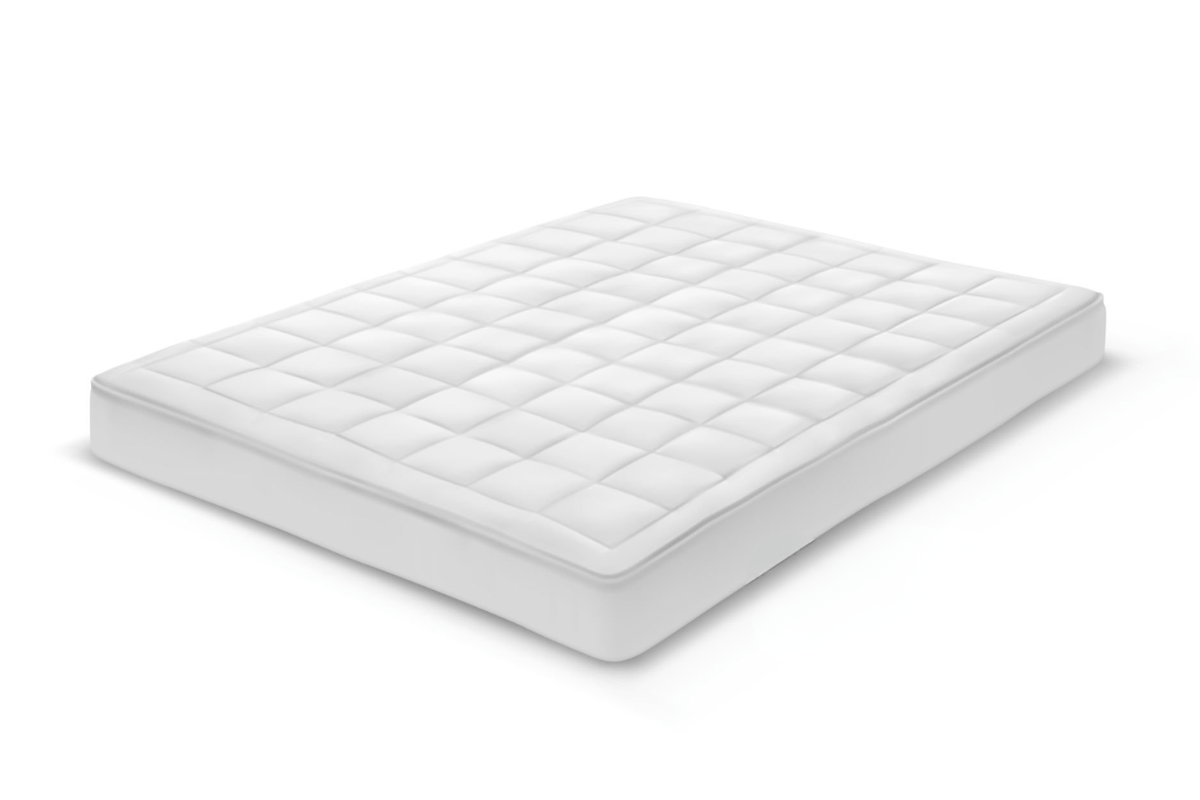
What Is the Average Lifespan of a Memory Foam Mattress?
A quality memory foam mattress typically lasts around 7 to 10 years. Those built with high-density foam, usually 5 pounds per cubic foot or more, hold up longer. Some have stayed supportive and comfortable for over a decade with proper care. The early stages of use also matter, including how long does a memory foam mattress take to expand and what happens if you sleep on a memory foam mattress before 48 hours, because these factors affect structural integrity and long-term durability.
Lower-density models, on the other hand, start losing shape much sooner. Mattresses with less than 3.5 pounds per cubic foot of foam often show wear in just a few years. Early sagging and deep body impressions are common with those types.
Foam density isn’t something most people notice right away, but it matters in the long run. Brands rarely highlight it, yet it affects durability. A mattress might feel great at first, though if the core breaks down quickly, the comfort doesn’t last.
What Causes Memory Foam to Break Down?
Memory foam mattresses gradually lose their firmness and shape over time, particularly in areas that bear the most weight. This can result in an uneven surface and reduced support for the body, with frequently used spots showing signs of wear more quickly.
Mattresses made with lower-density foam tend to deteriorate faster due to the reduced material available to consistently support weight. Single-sided mattresses are also prone to quicker breakdown, especially if not regularly rotated. People with higher body weights may notice sagging earlier, not because of misuse, but due to the increased nightly pressure on the foam.
Environmental factors like heat and humidity can accelerate the deterioration of memory foam by weakening its structure. Additionally, using the mattress on an inadequate foundation, such as warped slats or a failing box spring, can place extra stress on the foam, leading to premature sagging. This uneven support can cause the mattress to break down earlier than expected, even with normal daily use.
How Do You Know When It’s Time to Replace It?
A mattress doesn’t last forever, even one that once felt amazing. Over time, foam loses its ability to support, cool, and bounce back. Many people don’t realize this until sleep becomes uncomfortable night after night.
- Deep indentations or sagging spots that remain even after getting up
- Morning stiffness, neck pain, or lower back discomfort
- Better sleep on a hotel bed, couch, or anywhere else
- Trapped heat more often, especially if the foam no longer allows airflow
- Lumpy or uneven surface, no matter how it’s adjusted
- Over 8 years old and already showing one or more of these signs
If dips develop in the mattress, fixing the dip in the memory foam mattress helps maintain comfort and support. No one wants to spend years tossing and turning on a mattress that no longer does its job. Sleep quality shifts over time, so noticing these changes helps avoid the slow slide into restless nights. Some mattresses hold up longer than others, but none last forever.
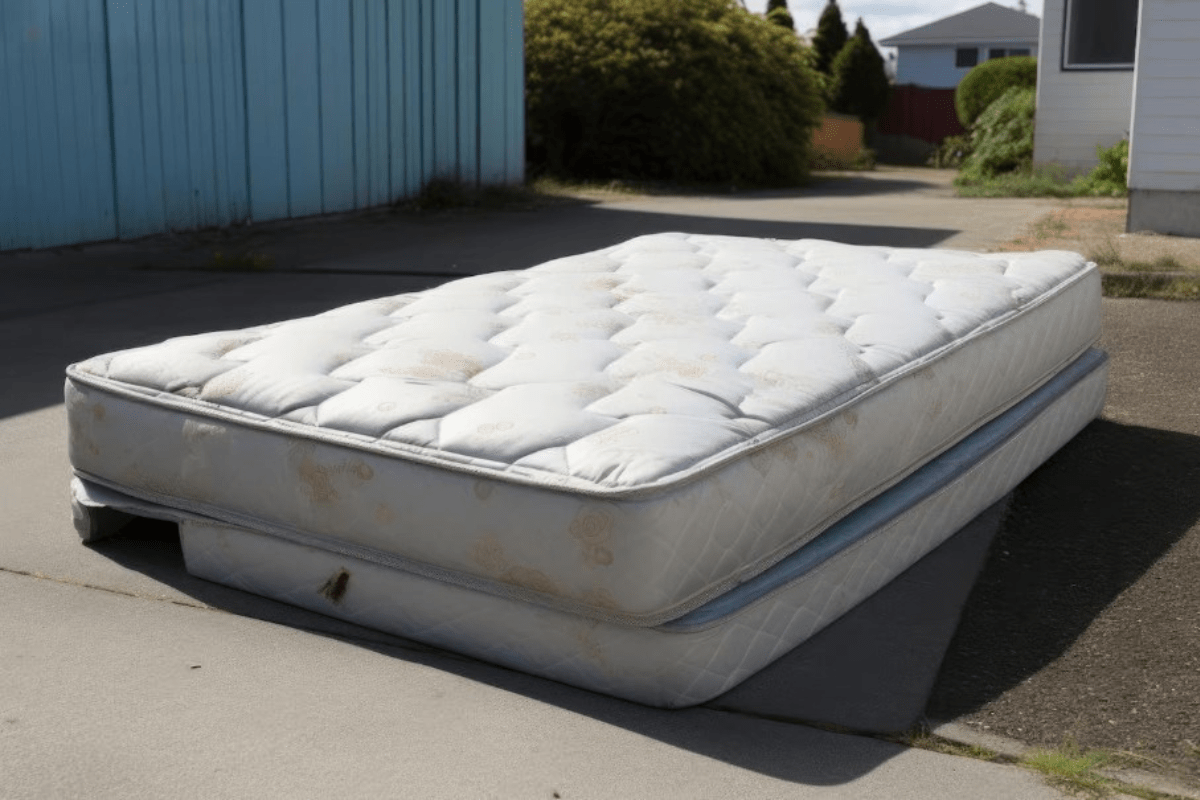
How Can You Extend the Lifespan?
Keeping a memory foam mattress in good shape isn’t complicated, but it does take a little consistency. Rotating it every few months helps even out pressure so one side doesn’t wear out too fast. A flat and sturdy base also keeps the structure supported over time.
A good mattress protector also helps. Something breathable and waterproof helps guard against spills and sweat without trapping heat. People usually skip this step, but it really helps avoid those hidden stains or odors that build up. It also protects the foam from breaking down too soon. Regular maintenance also means dealing with spills properly, which includes how to get urine out of memory foam mattress and how to get stains out of it easily to prevent lasting damage.
Sitting in the same spot every day compresses the foam faster than usual. And jumping on the bed, especially for kids, strains the internal layers. Skipping those habits adds a couple more years to how long the mattress stays comfortable. Proper care also includes cleaning the memory foam mattress, drying it thoroughly, and storing it correctly to prevent damage and maintain its shape.
Can a Mattress Topper Help?
Adding a quality latex or memory foam topper can provide extra cushioning, potentially alleviating pressure points and discomfort caused by a worn mattress surface. Many users report an immediate improvement in sleep comfort, particularly if their original mattress feels too firm or uneven. This quick solution can offer some relief without the need for a full mattress replacement.
A topper may extend the life of your mattress by one to two years, depending on the extent of wear. It can help mask minor dips or lumps, which might be enough to postpone the purchase of a new bed for some people. However, it’s important to note that a topper cannot address underlying support issues within the mattress itself.
When the core of the mattress begins to sag or deteriorate, simply adding a layer of foam won’t solve the problem. Your body will still sink in places it shouldn’t, and you may continue to experience soreness upon waking. While a topper can be a useful temporary solution for improving comfort, it should not be considered a long-term substitute for proper mattress support.
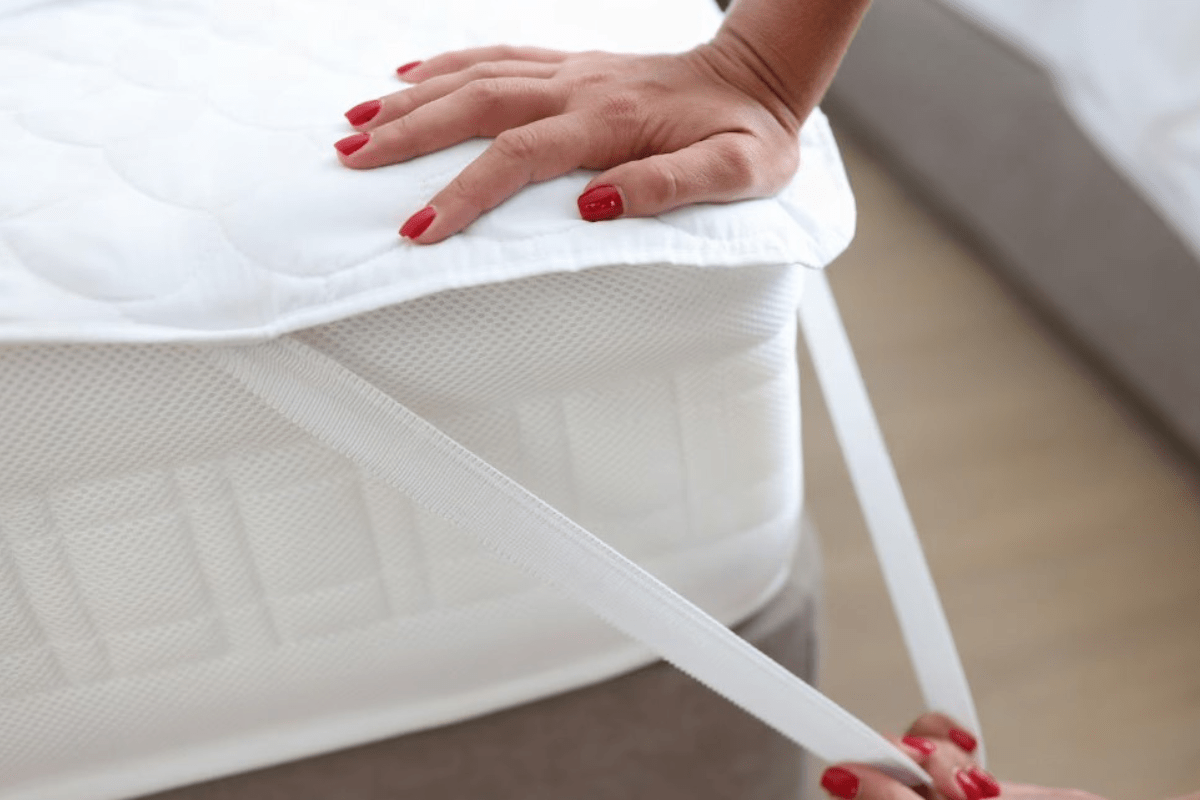
What’s the Best Memory Foam Density for Durability?
Memory foam durability mostly comes down to density. For comfort layers, a density between 4 to 5 pounds per cubic foot often holds up better over time. Anything lower wears out faster, especially with regular use.
Support layers underneath should have at least 1.8 pounds per cubic foot. This gives the mattress a stronger core, helping it stay firm and supportive longer. Some brands still cut corners by using softer and cheaper foam in these areas.
Mattresses with thick low-density foam, especially over 2 inches, usually don’t age well. They form body dents early, feel uneven within a few years, and lose their cushion too soon. For those who want consistent support without quick sagging, it helps to check the specifications before buying, considering what thickness of memory foam mattress is best to balance comfort and durability.
Do Budget Memory Foam Mattresses Wear Out Faster?
Budget memory foam mattresses wear out more quickly than higher-end options. This is usually because they use lower-density foam in the comfort layers, which breaks down faster over time. Typically, these mattresses may begin to lose support and develop sagging within 3 to 5 years of regular use.
Memory foam mattress cost influences its quality, since price can sometimes reveal the mattress’s durability but it’s important to look beyond just cost. Checking the specifications and foam density gives a clearer idea of durability. Manufacturers who openly share these details usually offer products that last longer.
Durability depends a lot on the materials inside the mattress. Higher-density foams tend to maintain their shape and comfort better, while cheaper foams compress and degrade sooner. Understanding these differences helps set realistic expectations about how long a budget memory foam mattress will hold up.
What Role Does the Mattress Foundation Have?
The mattress foundation is important in preserving the lifespan of a memory foam mattress. A sagging or uneven base causes the mattress to lose its shape faster and puts unnecessary pressure on the foam layers. This stress leads to premature wear and reduces overall comfort.
Supporting memory foam properly requires a foundation that provides firm, even support. Solid platform beds or slatted bases with slats spaced no more than about three inches apart work best. Older box springs prove less effective because they fail to provide the consistent flat surface memory foam needs to perform well.
Beds with center beams also require sturdy legs beneath them to prevent sagging in the middle. A foundation that stays stable and flat helps keep the mattress in good condition longer and maintains its support and comfort over time, while knowing how to move a memory foam mattress and how to dispose of it properly also supports its longevity and responsible handling.

Can Heat and Humidity Damage Memory Foam?
Heat and humidity have a negative effect on memory foam over time. Excess moisture can cause the foam to become softer and lose its original support, which may affect comfort. Additionally, damp conditions increase the chance of mold or mildew growth, especially if the mattress doesn’t allow for good airflow. This brings up how to make a memory foam mattress cooler and how to reduce trapped heat while maintaining comfort and durability.
To reduce moisture buildup, using a breathable, moisture-resistant mattress cover helps a lot. Regularly airing out the mattress by pulling back the sheets encourages ventilation. Also, avoiding placing the mattress directly on the floor allows air to circulate underneath, preventing trapped humidity.
For those living in humid climates, memory foam mattresses with gel infusion or open-cell designs offer better breathability. These features help improve airflow and keep the foam cooler and less prone to moisture damage. Choosing such options can extend the mattress’s lifespan in challenging environments.
Final Thoughts
Memory foam mattresses vary widely in quality and comfort. A high-quality mattress with proper support layers can provide restful sleep for 8 to 12 years or more. However, cheaper options often break down quickly, leading to discomfort and poor sleep quality.
When choosing a mattress, it’s important to research the materials and construction. Companies that are transparent about their products’ components give consumers a better understanding of durability and comfort. This openness can indicate whether the mattress will truly support good sleep over time.
The internal structure of a mattress is crucial to its long-term performance. Cutting corners on quality can result in a stiff, hot, or sagging mattress – issues no one wants after investing in their sleep. By paying attention to the materials used, you can ensure both comfort and health benefits from your mattress purchase.

